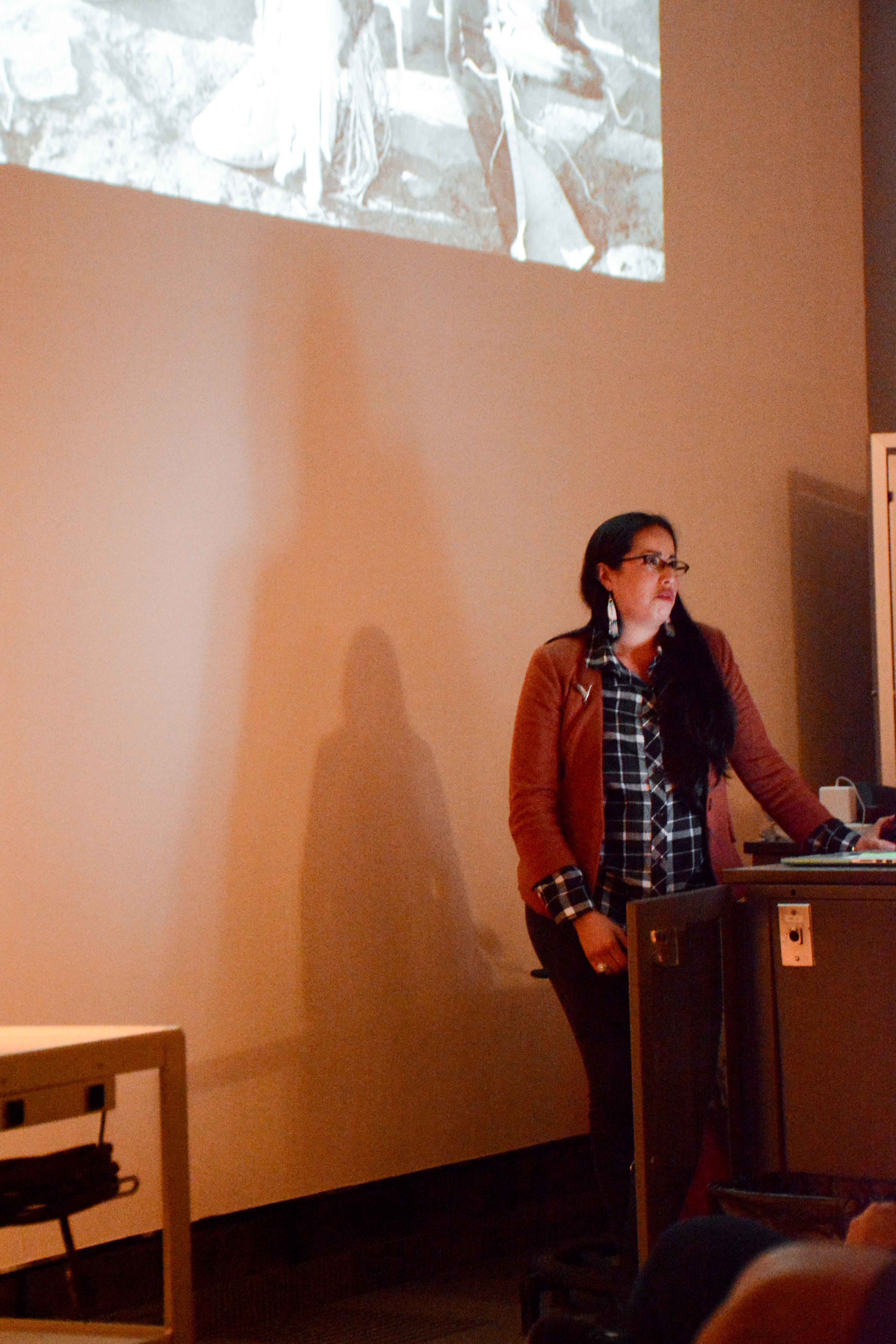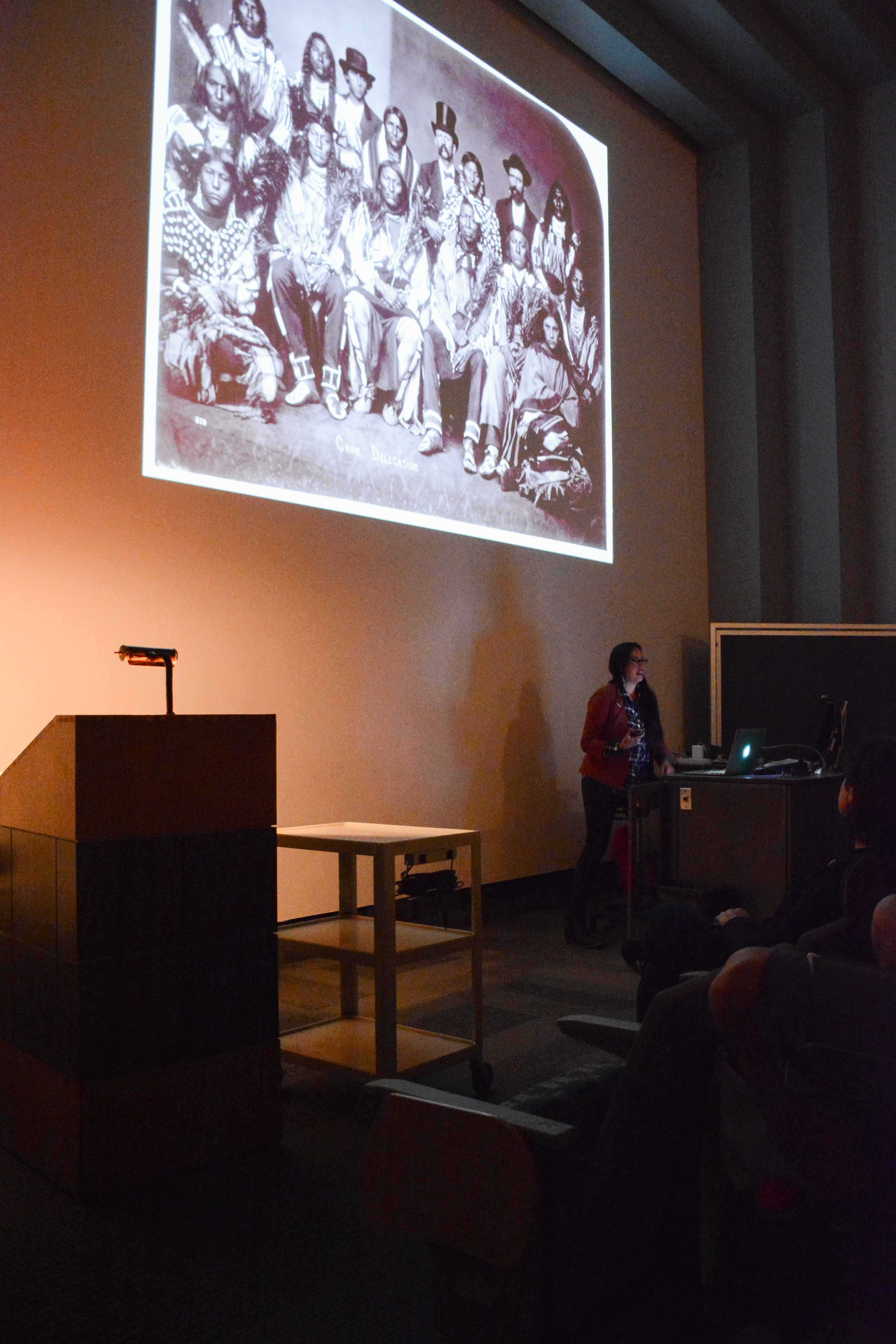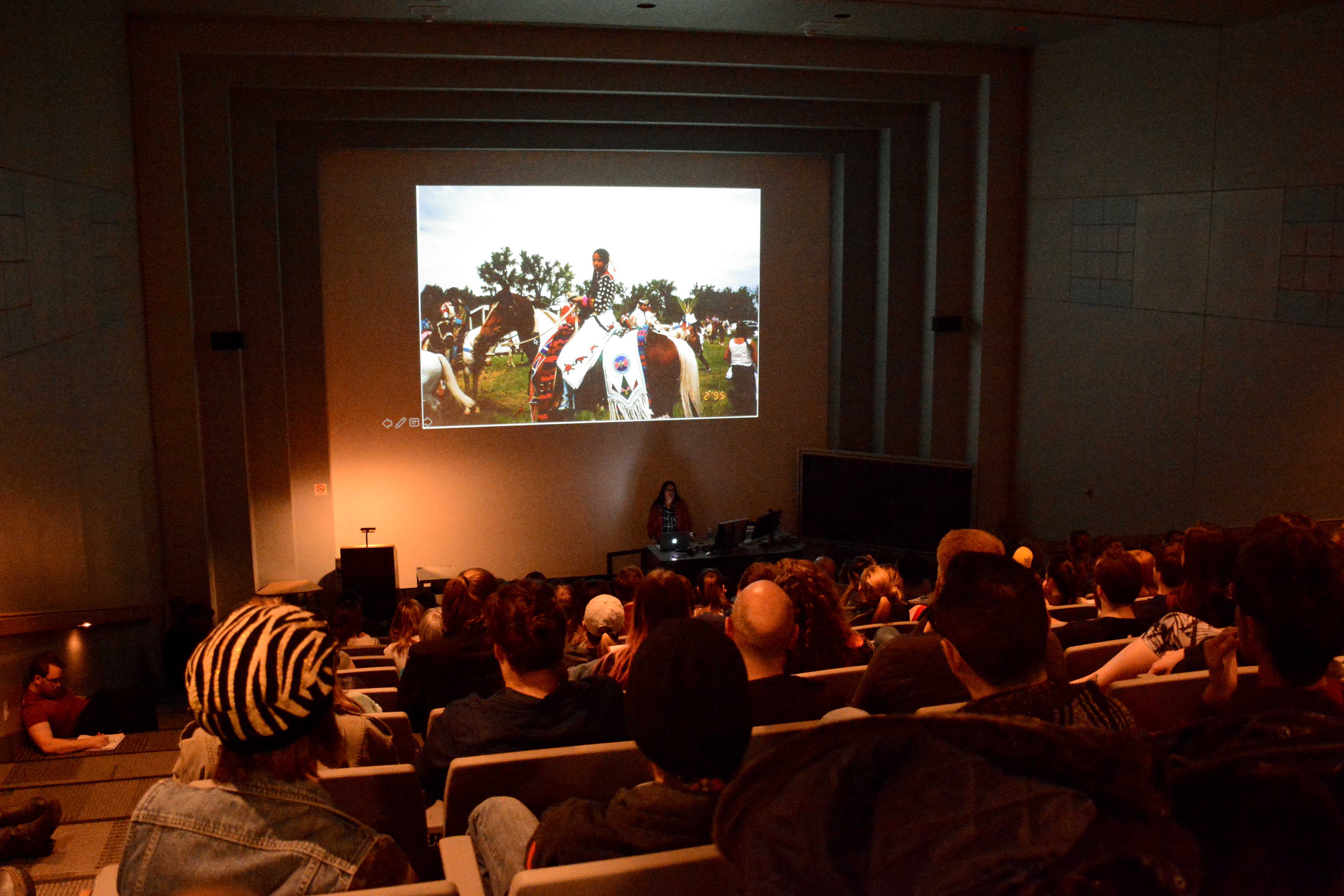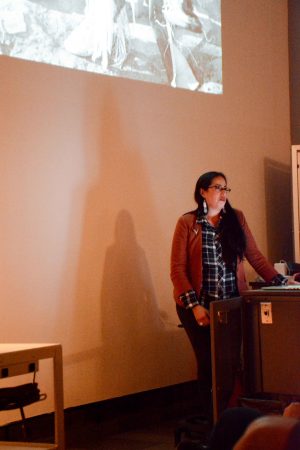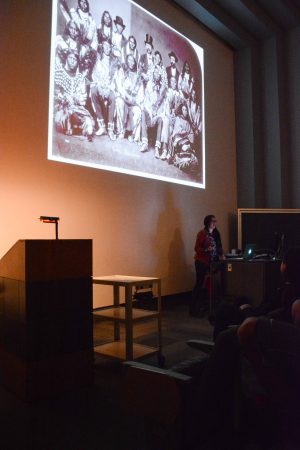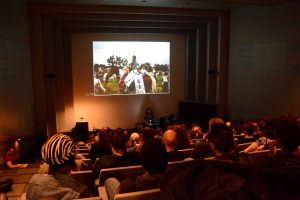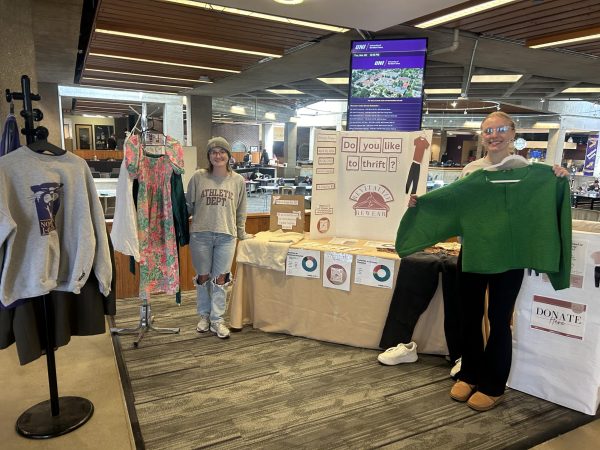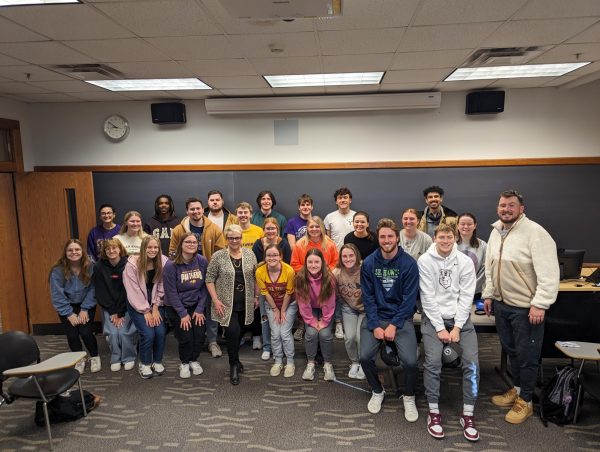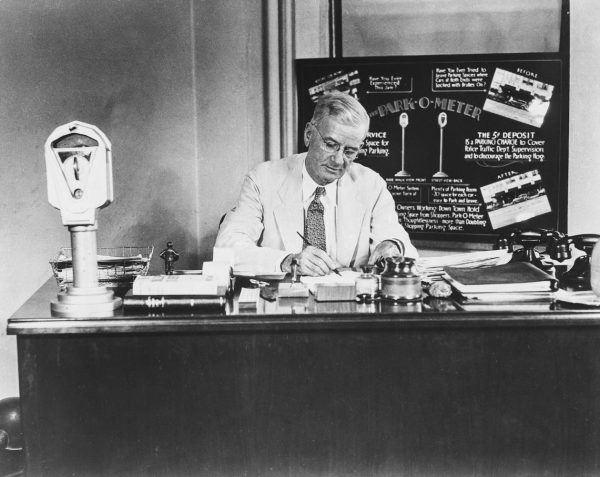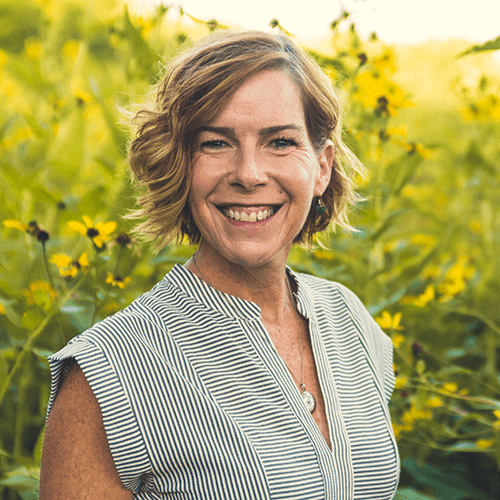Native American artist comes to UNI
Mar 9, 2017
From a Crow Fair to ‘little people,’ attendees at a recent art show received insight into Apsaalooke culture.
On Monday, March 6, Wendy Red Star, a multimedia artist deeply rooted in her Native American background, hosted a lecture in the Kamerick Art Building as part of the Meryl Norton Hearst lecture series. The lecture hall was packed with community members and students alike, some of whom were eventually forced to sit in the aisles as a result of limited seating.
Angela Waseskuk, an instructor in UNI’s art department and their foundations coordinator, said that Red Star was the perfect artist for the series, given the overarcing theme.
“The theme that the committee picked was ‘Doubled Over: Humor, Wit and Irony, in Art and Design,’” Waseskuk said.
“I definitely think about her work having a sense of humor. I think she uses wit in her work quite a bit, while still having a reverence for the culture and the history that she’s tapping into,” Waseskuk said. “She’s someone that I think fits very well into that category and someone who is just talking about culture, using culture [and] celebrating culture in her work, as well.”
As an artist, Red Star’s work is marked by a modern and contemporary aesthetic while also maintaining a constant presence of Native American culture. Red Star is of Apsaalooke descent, a Native American people that historically lived in the Yellowstone River valley. The Apsaalooke are also known as the Crow people, which is currently a federally recognized tribe.
“She grew up on the Crow Reservation in Montana, and so a lot of her work kind of stems from her Native American upbringing and that culture,” Waseskuk said.
Throughout the presentation, Red Star introduced different elements of Crow culture. At one point in the presentation, Red Star described “Prayer Rock,” a place her family often visits in Montana.
“[‘Prayer Rock’ is] where the ‘little people’ live,” Red Star said during her presentation.
Red Star described these ‘little people’ as an important aspect of Crow culture. According to Red Star, the ‘little people’ could determine both good and bad fortune if not shown respect.
Paula Busse, a senior history major, said that the lecture as a whole was “very empowering, fascinating [and] eye opening.”
Another piece of Crow culture that Red Star discussed was Crow Fair, which she said she and her daughter, Beatrice, regularly attend. Red Star described Crow Fair as “a cultural revitalization” where Native American culture has been celebrated since 1914.
These examples of native culture, among others, have inspired Red Star’s work throughout her career.
One of the pieces that Red Star spent the most time discussing was called “Four Seasons: Fall, Winter, Spring and Indian Summer,” in which Red Star inserted herself into a backdrop of each season, mixing both the cultural and natural aspects of Native American life.
“She’s an interdisciplinary artist, meaning that she works in a lot of different media — so she does sculpture, photography, […] performance, video and fiber arts, as well,” Waseskuk said. “A lot of her work tends to take from Native American culture and kind of puts a contemporary twist on it. So, she’s kind of using parts of her own history, but in a contemporary way.”
Waseskuk cited Red Star’s depictions of Native American women as an example of this contemporary approach.
“Often times, she’s using kind of the stereotypical kind of western idea of idealized version of the Native American female — she takes that image and kind of subverts it in her work as well, kind of reclaims it in her work,” Waseskuk said.
Besides Red Star’s artwork itself, Waseskuk also believed bringing Red Star to campus was a great way for students to see a strong, successful female in the art industry.
“I thought of her in terms of the theme for this year’s series, and then I wanted to bring in a strong, female perspective,” Waseskuk said.
This sense of feminine strength and native culture is often evident throughout Red Star’s work. Much of her work incorporates native culture and nature with modern aspects. Red Star also has the tendency to insert her own image into her photographs.
In the end, Waseskuk said the lecture’s main goal was for students and members of the community to be inspired by Red Star’s work.
“I want them to just be validated in the importance of their own voice and let their work communicate something about their experiences because I think Wendy Red Star does that so well in her own work,” Waseskuk said.


